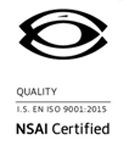FAQs
Pressure vessels are closed containers that are designed and manufactured to accommodate different types of gases and liquids at specific pressures and temperatures. Generally, the internal pressure of the vessel is higher than the external ambient pressure. Pressure vessels can be designed in any shape or size. However, the most common shapes are cylindrical, conical, and spherical.
Pressure vessels can be used in a wide variety of applications to contain and store gases and liquids for industrial purposes. Some of the well-known industrial applications include:
- Geothermal plants
- Oil and gas refineries
- Mining sites
- Nuclear reactors
- Steam separators
- Pipelines for carrying gases like LPG, LNG, CNG, butane, chlorine and propane
There are three basic steps that are performed to design a pressure vessel. After these steps are completed, the engineers move onto the construction process.
- Listing Pressure Vessel Requirements:
The designer first sits down with the client and collects all the requirement details from him. The size and shape of the vessel is agreed upon depending on the requirement. Details such as length, internal pressure, bolt diameters, inner diameter, and outer diameter are confirmed. Also, the specifications for aspects like number of bolts on the vessel, minimum wall thickness, and allowable stress on wall and bolt materials are also decided. Welding requirements are discussed and confirmed as well. BEPeterson provides the customer with a Vessel Checklist. The customer is asked to complete the checklist which takes into account all of the necessary design requirements.
- Creating Final Model with Engineering Software:
The Compress layout is uploaded onto engineering software like AutoCAD and Autodesk. The designer creates a 3D model of the pressure vessel, adding the necessary components such as pressure heads, nozzles and bolts. Additional engineering may be required to consider and confirm aspects and constraints such as:
- Material stresses
- Pressure loads
- Thermal loads
- Displacement
Once all details have been confirmed, the final general arrangement design is sent to the client for approval
Pressure vessel manufacturing is a detailed and precise process, with a number of tasks and strict adherence to various safety and manufacturing codes. If you are choosing a pressure vessel, you need to ensure that the following aspects have been completed:
- The pressure vessel has been manufactured while adhering to ASME (CRN, PED / CE) regulations.
- Only high grade metals and materials can be utilized for vessel fabrication. MTR’s (material test reports) are required for all pressure vessel fabrication.
- Certified welders, who work according to ASME’s welding guidelines must be used to fabricate the pressure vessel.
- Testing and Non Destructive Examination (NDE) must be performed by a certified ASME inspector. BEPeterson maintains ASME approval for U, UM and S stamped pressure vessels.
- Once fabricated the pressure vessel will be stamped with the designated certification mark of either U, UM or S.
- All required documentation is sent to the National Board, kept at BEPeterson and provided to the customer.
BEPeterson produces ASME as well as non-code pressure vessels and tanks. All ASME pressure vessels adhere to Section VIII of the Boiler and Pressure Vessel Code (BPVC). We hold all quality certifications including ISO 9001, ASME & TUV (CRN, PED / CE are available on request). Our vessels are designed and precision engineered using high grade, superior materials. Examples include stainless steel, carbon steel, and high alloy materials, such as 304 and 316 series SS, 2205 & 2507 Duplex SS, and Hastelloy alloys. Certified welders and engineers work on the vessel during all stages of the construction process.

